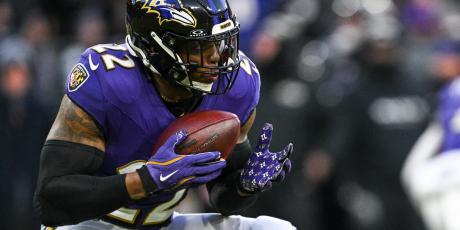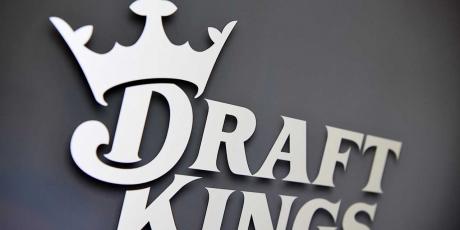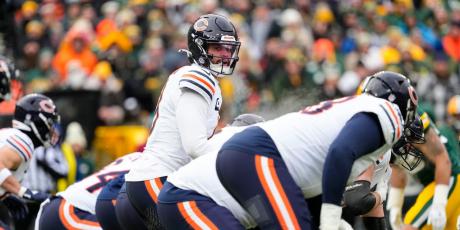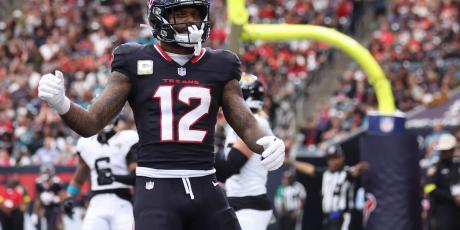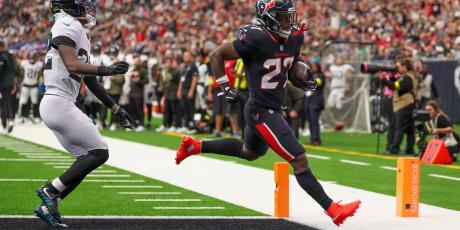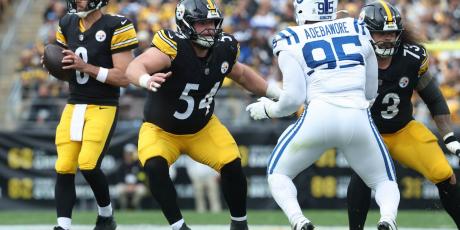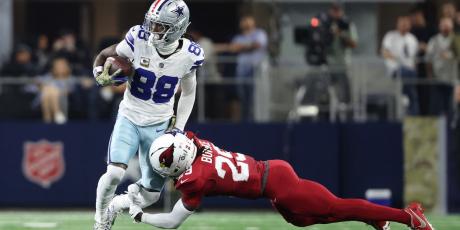How Kyle Shanahan Impacts the 49ers' 2017 Fantasy Outlook

For the third season in a row, I will be writing a series of articles exploring how new NFL playcallers will impact the fantasy outlook of their respective offense. In 2017, five teams will start the season with a new head coach and eight teams will have new a offensive coordinator, but only three will have a new playcaller who has previously called plays at the NFL level. Because our goal at 4for4 is to always provide actionable, data-driven content, this series will focus on those three playcallers.
Except for a handful of coaches on extreme ends of the pass/run ratio spectrum, drawing hard conclusions based on a team’s playcaller can be a perilous exercise—most volume stats are determined by roster talent and game flow. Knowing this, I’ve done my best to evolve this series into a source that highlights where playcallers will affect the game the most, namely situational play splits and, to a lesser extent, pace. As has been the case in previous seasons, I will continue to reference positional volume and market share numbers, but those stats will no longer be the foundation of this analysis.
More in TJ's Playcaller series: Doug Marrone | Mike McCoy | How Play-Calling Tendencies Affect Fantasy Football
A Snapshot of Kyle Shanahan’s History
Kyle Shanahan has spent nine seasons as an offensive coordinator at the NFL level, but he deferred primary play-calling duties to Gary Kubiak in Houston, and to his father, Mike Shanahan, in Washington. Over his last three seasons in Cleveland and Atlanta, the younger Shanahan has had the opportunity to show us what an offense with his fingerprints on it truly looks like.
| Year | Team | Rush % in Wins | Rush % in Losses |
|---|---|---|---|
| 2014 | Browns | 50.7% | 44.2% |
| 2015 | Falcons | 45.5% | 32.6% |
| 2016 | Falcons | 45.2% | 35.7% |
| Overall | 46.8% | 37.9% |
| Year | Team | Neutral Rush % | Rush % up by 8+ | Rush % down by 8+ |
|---|---|---|---|---|
| 2014 | Browns | 44.4% | 67.5% | 37.7% |
| 2015 | Falcons | 39.6% | 57.6% | 26.3% |
| 2016 | Falcons | 37.3% | 48.5% | 33.8% |
| Overall | 40.5% | 54.0% | 32.3% |
In his three seasons calling plays, Shanahan has been one of the least game-script dependent coaches in the league. Only three active playcallers have a smaller discrepancy between their run rates in wins versus losses, while just two active playcallers show a smaller disparity in play-calling splits in situations when their team is up by 8 or more compared to situations when their team is down by 8 or more.
When we look at Shanahan's situational play-calling splits broken down by season, though, we see a coach that has varied his approach in his previous two locations. No matter the game conditions, Shanahan took a much more run-heavy approach in Cleveland compared to his time in Atlanta. Where Shanahan has been incredibly consistent is in his team’s offensive pace:
| Year | Team | Seconds/Play - Total | Seconds/Play - Neutral |
|---|---|---|---|
| 2014 | Browns | 26.01 | 27.85 |
| 2015 | Falcons | 28.19 | 30.38 |
| 2016 | Falcons | 28.29 | 29.10 |
| Average | 27.50 | 29.11 |
Pace stats courtesy of FootballOutsiders.com
In the introduction, I mentioned that pace is probably less important than situational play calling when it comes to coaching tendencies; overall pace can be heavily skewed by game flow—good teams that win a lot are likely to sit on the ball late in games, while bad teams will spend more time in hurry-up mode.
Where we can glean great insight into a coach's intent is in neutral situations. In those scenarios, only four playcallers have had their team run plays at a quicker pace than Shanahan. For fantasy purposes, this means, all things being equal, a Kyle Shanahan-led offense is likely to run more plays than a league-average offense—and more plays equals more chances for fantasy points.
Shanahan's Quarterbacks
| Year | Player | Games | Completions | Attempts | Yards | TD | INT | Fantasy Points |
|---|---|---|---|---|---|---|---|---|
| 2014 | Brian Hoyer | 14 | 17.3 | 31.3 | 237.6 | 0.9 | 0.9 | 11.2 |
| 2015 | Matt Ryan | 16 | 25.4 | 38.4 | 286.9 | 1.3 | 1.0 | 14.5 |
| 2016 | Matt Ryan | 16 | 23.3 | 33.4 | 309.0 | 2.4 | 0.4 | 21.5 |
It probably comes as no surprise that Shanahan switched to a more pass-heavy game plan when going from Brian Hoyer to Matt Ryan, but few expected Shanahan to coax Ryan into his best statistical season to date in every major counting and efficiency stat—while attempting his fewest passes since 2009.
While many will say that the Falcons caught lightning in a bottle in 2016, Ryan and Shanahan were convinced early on that they had something special as a quarterback/coach combination:
Whether or not Shanahan is some quarterback whisperer is still to be determined, but there may be evidence that his passing philosophy leans towards an optimal game plan—at least for fantasy purposes: In his three seasons as a playcaller, Shanahan’s primary quarterbacks have all finished ninth or better in air yards per pass attempt. In other words, Shanahan’s quarterbacks have typically pushed the ball further down the field than average—deeper passes are the most productive for fantasy purposes on a per-target basis.
Shanahan's Running Backs
| Year | Player | Games | Rushes | Receptions | Total Yards | PPR FP | % of RB Touches |
|---|---|---|---|---|---|---|---|
| 2014 | Terrance West | 14 | 12.2 | 0.8 | 52.6 | 8.1 | 40.1% |
| 2015 | Devonta Freeman | 15 | 17.7 | 4.9 | 108.9 | 21.1 | 70.6% |
| 2016 | Devonta Freeman | 16 | 14.2 | 3.4 | 96.3 | 17.8 | 59.5% |
| Year | Rushes | Receptions | Total Yards | PPR FP | % of Team Touches |
|---|---|---|---|---|---|
| 2014 | 26.6 | 1.8 | 114.0 | 19.4 | 61.3% |
| 2015 | 23.9 | 6.1 | 144.9 | 26.7 | 58.2% |
| 2016 | 23.7 | 5.8 | 168.9 | 32.0 | 59.7% |
As mentioned earlier, rushing volume can be heavily dictated by game flow. When we look at Shanahan’s tendencies in neutral situations, he has run at a rate right at the league average, but he also uses creativity in a seemingly concerted effort to keep his running backs involved no matter the game conditions.
Over the course of his play-calling career, Shanahan has offered his running backs 59.7 percent of team touches, a touch share that ranks ninth among active playcallers, and is on par with his 2016 Atlanta team that finished sixth in that category. In fact, Shanahan’s teams have ranked in the top half of the league in running back touch share in each of the last three seasons, finishing in the top six twice.
While he focused on a run-first approach that afforded three different backs over 100 carries in Cleveland, Shanahan shifted gears in Atlanta to maximize the talents of his versatile running back duo of Devonta Freeman and Tevin Coleman. After the Browns finished dead last in running back target share in Shanahan's lone season in Cleveland, his Falcons finished ninth and sixth in 2015 and 2016, respectively. Though Freeman dropped from the top PPR back in 2015 to the No. 6 PPR back in 2016, Atlanta finished the year with the second-most overall PPR running back points.
Shanahan's Pass-Catchers
| Year | Player | Games | Targets | Receptions | Rec Yards | Rec TD | PPR FP | % of Team Targets |
|---|---|---|---|---|---|---|---|---|
| 2014 | Andrew Hawkins | 15 | 7.5 | 4.2 | 54.9 | 0.13 | 10.6 | 22.4% |
| 2015 | Julio Jones | 16 | 12.7 | 8.5 | 116.9 | 0.50 | 23.1 | 32.9% |
| 2016 | Julio Jones | 14 | 9.2 | 5.9 | 100.6 | 0.43 | 18.6 | 24.3% |
| Year | Player | Games | Targets | Receptions | Rec Yards | Rec TD | PPR FP | % of Team Targets |
|---|---|---|---|---|---|---|---|---|
| 2014 | Miles Austin | 12 | 6.1 | 3.9 | 47.3 | 0.17 | 9.7 | 14.6% |
| 2015* | Jacob Tamme | 15 | 5.4 | 3.9 | 43.8 | 0.07 | 8.7 | 13.1% |
| 2016 | Mohamed Sanu | 15 | 5.4 | 3.9 | 43.5 | 0.27 | 9.8 | 15.3% |
*In 2015, running back Devonta Freeman ranked second on the team in catches.
Whenever a team has a receiver as tremendous as Julio Jones, that player is going to dominate targets, and that was the case while Shanahan was in Atlanta. In 2015, Julio led the league in targets; in 2016, he was on pace to finish 11th in targets despite missing two games.
Andrew Hawkins posted a more pedestrian target share as Shanahan’s main receiver in Cleveland, but even Hawkins’ market share ranked 16th among all pass-catchers in 2014.
Though it’s most likely a case of a lack of talent behind Shanahan's primary receiver, it’s worth noting that he has yet to offer two pass-catchers—be it a receiver or a tight end—more than 15.3 percent of overall team targets. Last season, 23 teams had two receivers or tight ends with at least 15.3 percent of overall team targets, and every active playcaller besides Marty Mornhinweg has at least one season in which two of his pass-catchers have hit that target share number.
None of Shanahan's tight ends have finished better than 14th in PPR fantasy points as a unit, and he’s yet to prop up an individual tight end to fantasy TE1 status.
What It All Means for the 49ers in 2017

- All Premium Content
- The most Accurate Rankings Since 2010
- Expert Draft Picks w/DraftHero
- Highest Scoring Lineup + Top Available Players w/LeagueSync
- ...and much much more

